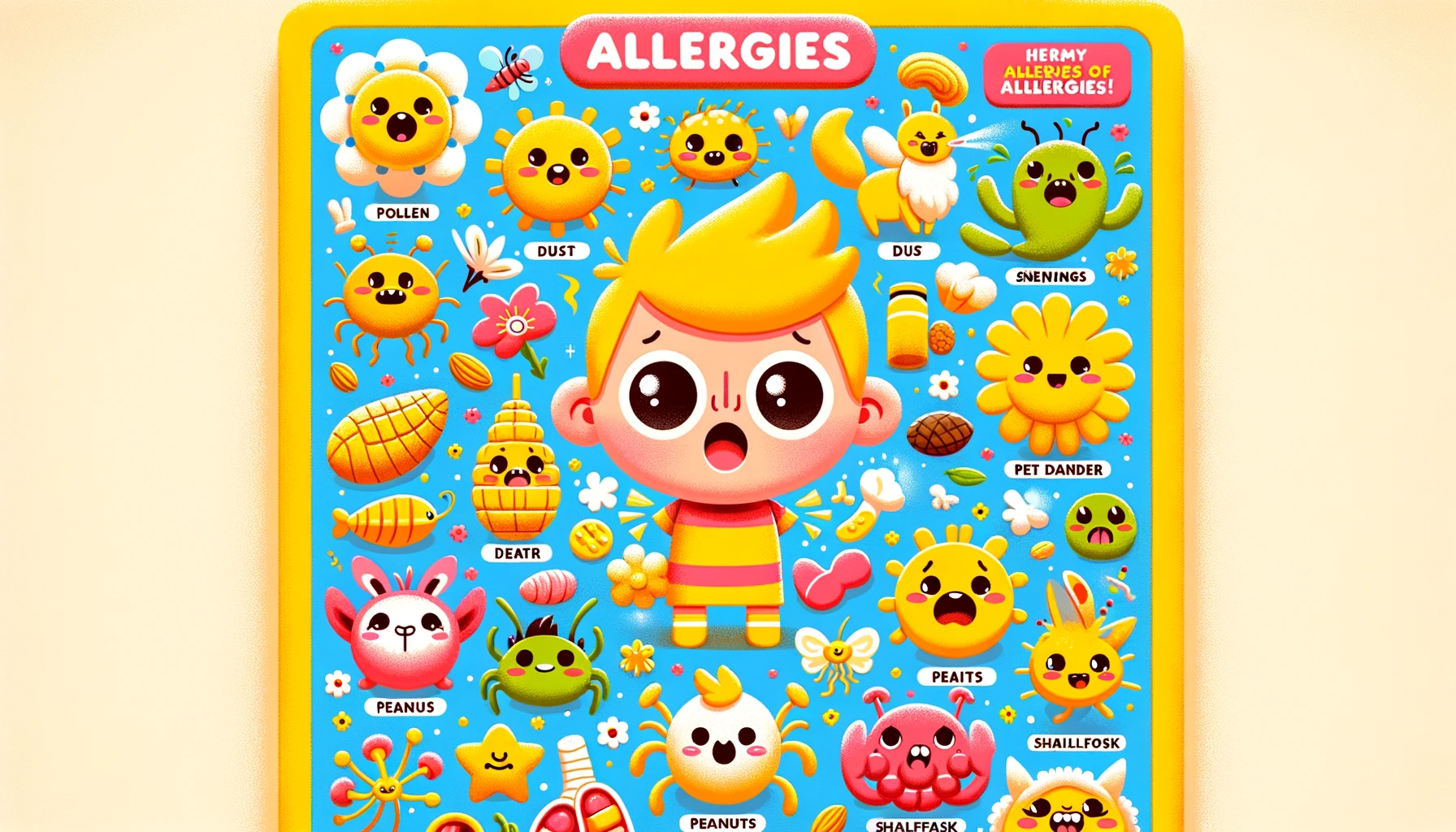Understanding Allergy Types: Causes, Symptoms, and Management
Understanding Allergy Types: Causes, Symptoms, and Management
Table of Contents
- Introduction to Allergies
- Types of Allergies
- Food Allergies
- Seasonal Allergies
- Pet Allergies
- Drug Allergies
- Insect Sting Allergies
- Latex Allergies
- Mold Allergies
- Causes of Allergies
- Symptoms of Allergies
- Diagnosis of Allergies
- Management and Treatment Strategies
- Conclusion
- References
Understanding Allergy Types: Causes, Symptoms, and Management
Introduction to Allergies Allergies occur when the immune system reacts to a foreign substance, such as pollen, bee venom, or pet dander, that doesn’t cause a reaction in most people. This article explores the different types of allergies, their causes, symptoms, and effective management strategies to help individuals live more comfortably and safely.
Types of Allergies Allergies can be classified into several types based on the allergens that trigger them.
Food Allergies
Common Food Allergens:
- Peanuts
- Tree nuts (e.g., almonds, walnuts)
- Shellfish (e.g., shrimp, crab)
- Fish
- Milk
- Eggs
- Soy
- Wheat
Symptoms:
- Hives
- Swelling of the lips, tongue, or throat
- Abdominal pain
- Vomiting
- Diarrhea
- Anaphylaxis (a severe, life-threatening reaction)
Seasonal Allergies
Common Allergens:
- Pollen from trees, grasses, and weeds
Symptoms:
- Sneezing
- Runny or stuffy nose
- Itchy eyes, nose, or throat
- Watery eyes
Pet Allergies
Common Allergens:
- Proteins found in pet skin flakes (dander), saliva, and urine
Symptoms:
- Sneezing
- Runny or stuffy nose
- Itchy, watery eyes
- Skin rash or hives
Drug Allergies
Common Allergens:
- Antibiotics (e.g., penicillin)
- Nonsteroidal anti-inflammatory drugs (NSAIDs)
- Chemotherapy drugs
Symptoms:
- Skin rash
- Hives
- Itching
- Fever
- Swelling
- Anaphylaxis
Insect Sting Allergies
Common Allergens:
- Venom from bees, wasps, hornets, and ants
Symptoms:
- Pain, redness, and swelling at the sting site
- Hives
- Itching
- Anaphylaxis
Latex Allergies
Common Allergens:
- Proteins in natural rubber latex
Symptoms:
- Skin rash
- Hives
- Itching
- Respiratory symptoms (e.g., sneezing, runny nose)
- Anaphylaxis
Mold Allergies
Common Allergens:
- Spores from various types of mold
Symptoms:
- Sneezing
- Runny or stuffy nose
- Coughing
- Wheezing
- Itchy eyes, nose, or throat
Causes of Allergies Allergies are caused by the immune system’s reaction to a normally harmless substance (allergen). When exposed to an allergen, the immune system produces antibodies called Immunoglobulin E (IgE). These antibodies trigger the release of chemicals like histamine, causing allergic symptoms.
Symptoms of Allergies Allergy symptoms vary depending on the type of allergy and the severity of the reaction. Common symptoms include:
- Skin: Hives, itching, redness, swelling
- Respiratory: Sneezing, runny nose, nasal congestion, coughing, wheezing, shortness of breath
- Digestive: Abdominal pain, vomiting, diarrhea
- Anaphylaxis: A severe, life-threatening reaction characterized by difficulty breathing, swelling of the throat and tongue, rapid pulse, and loss of consciousness.
Diagnosis of Allergies Diagnosing allergies involves several steps:
- Medical History: Reviewing the patient’s medical history and symptoms.
- Physical Examination: Conducting a physical exam to check for signs of allergic reactions.
- Allergy Tests:
- Skin Prick Test: Small amounts of allergens are introduced into the skin to observe reactions.
- Blood Test: Measures the level of specific IgE antibodies in the blood.
Management and Treatment Strategies Managing allergies involves avoiding allergens, using medications, and considering immunotherapy.
Avoiding Allergens
- Environmental Controls: Use air purifiers, keep windows closed during high pollen seasons, and regularly clean to reduce dust and mold.
- Dietary Changes: Avoid foods that trigger allergic reactions.
- Pet Care: Regularly bathe and groom pets, and keep them out of certain areas of the home.
Medications
- Antihistamines: Relieve symptoms like itching, sneezing, and runny nose.
- Decongestants: Reduce nasal congestion.
- Corticosteroids: Reduce inflammation and severe allergic reactions.
- Epinephrine: Used for emergency treatment of anaphylaxis.
Immunotherapy
- Allergy Shots: Gradually introduce small amounts of allergens to build up tolerance.
- Sublingual Immunotherapy: Allergen tablets are placed under the tongue to improve tolerance.
Conclusion Understanding the different types of allergies, their causes, symptoms, and management strategies is crucial for effectively managing allergic reactions and improving quality of life. By identifying specific allergens and implementing appropriate prevention and treatment measures, individuals can lead healthier, more comfortable lives
<ⓒ WizardMedics (wizardmedics.com)>



